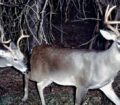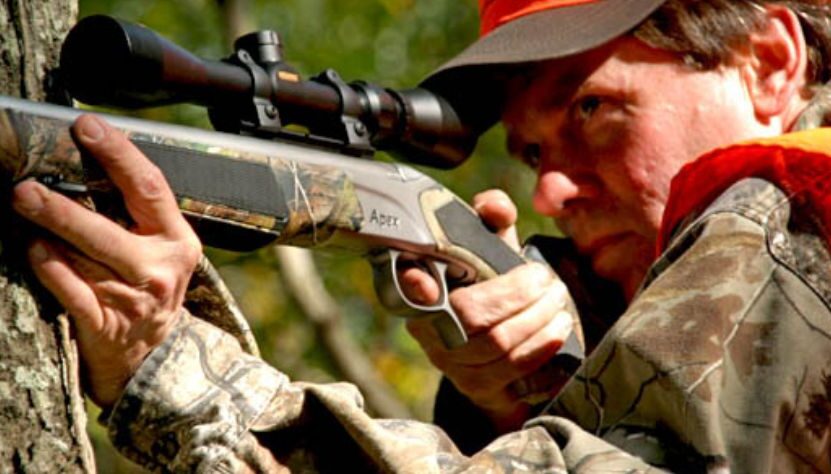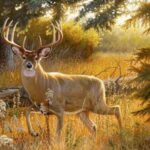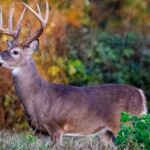Editor’s Note: Hunting for whitetails in deer sanctuaries is always productive, particularly during heavy hunting pressure.
How to Establish Sanctuaries:

Many lodge managers set up deer sanctuaries to use hunting pressure to ensure their hunters have good chances to take older-age-class bucks. According to one of the past managers at Tara Wildlife near Vicksburg, Mississippi, “We decide what portion of the property we will and won’t hunt each week. On the land we’re not planning to hunt, we’ll set up tree stands. We’ll hunt the land adjacent to the property we don’t hunt. Using this technique, any bucks that we spook off the property we’re hunting will move onto the lands we aren’t hunting where we already have our tree stands placed. Then the following weekend, we can slip onto that unhunted land, climb into the tree stands we’ve already hung, and have great chances of taking nice bucks.”
If you divide your hunting club into four or more hunting sections and then only hunt certain areas each weekend with your rifle, you too can use hunting pressure to put bucks in the regions where you’re not hunting; you also can read the other parcels of land for the next week. When your club does finally hunt these other places, the members will have opportunities to bag nice bucks.
How a Landowner Can Set-Up Sanctuaries:
“I use hunting pressure to my advantage,” says well-known hunter and outdoorsman Alex Rutledge of Birch Tree, Missouri. “I plant green fields all around the outside of the 800 acres I hunt. From that outer edge, I’ll make small-strip green fields that spoke into the center of my property. In the center of the land, I’ll leave a large, thick-cover region where deer can bed down with a big green field planted on one edge of that bedding area. In that big green field, I’ll plant several different strips of crops that mature at various times for deer and turkeys.”
This technique Rutledge uses that works well for deer hunting is known as the spoke-and-wheel type of management system. He’s designated the center of his property as a sanctuary, where he plants a large green field on one edge of a thick-cover bedding place for the deer. “I don’t go into those green fields. I don’t hunt over the green field in the center of my hunting land, and the only time there’s any activity there is when I’m planting crops.”
Rutledge doesn’t go into the bedding region during daylight hours. He reports, “The only time I enter the bedding place is if I need to retrieve a deer I’ve shot that has run in there. Even then, I wait until after dark to go into the bedding area and try and recover the deer.”
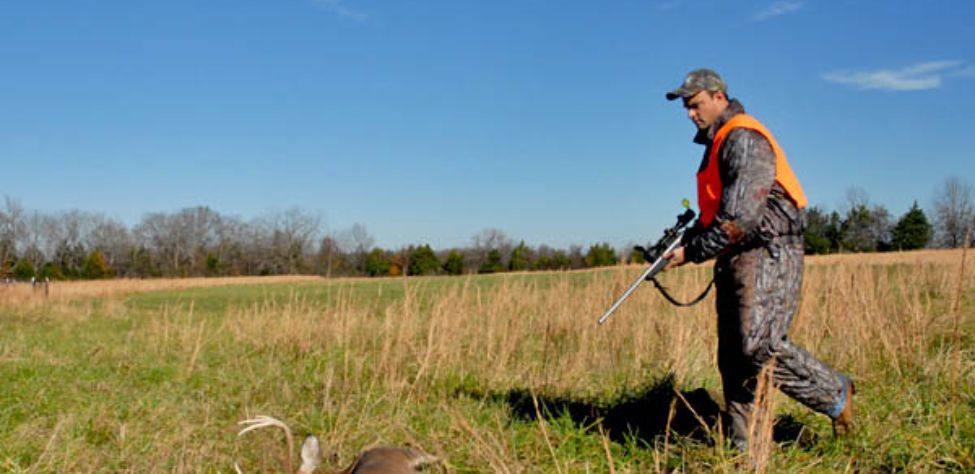
Rutledge understands that big bucks feed primarily at night. Therefore, the bucks from surrounding properties that discover the green fields on the edges of his land will feed in these green fields after dark when no hunters can take them. More than likely, these deer will follow the spoke-type green fields to the big green field in the center of Rutledge’s property. Then they may start holding and bedding in that center-of-the-field bedding spot, especially if they’re receiving pressure on the land from which they’ve just come.
“I hunt these big bucks outside of the sanctuary, along the green field trails and the travel trails they use from the outer edge of the property to the sanctuary,” Rutledge emphasizes. “Once a season, if I know I’ve got a really big buck feeding in my main green field and living in my sanctuary, I’ll hunt that sanctuary green field. I try to take the biggest buck I have on my land every year.”
Perhaps your hunting club can’t use a spoke-and-wheel kind of sanctuary-management program. However, even a modified spoke-and-wheel concept will drastically increase your members’ odds of taking bigger bucks, especially during heavy hunting pressure.
Why to Stay Away From Whitetails:
You can use another tactic to ensure you’ll have older-age-class bucks on your property to hunt by identifying the thickest-cover area on the land and then setting it up as a sanctuary. Post or flag the section of land to let all club members know they can’t hunt this place. By providing a sanctuary where older bucks can survive during hunting season, you’ll make sure you have older bucks on your hunting club’s property available to hunt. If you don’t have a sanctuary and hunt all your lands every week during hunting season, you’ll run the risk of moving the bucks you’ve raised to another property with less hunting pressure.
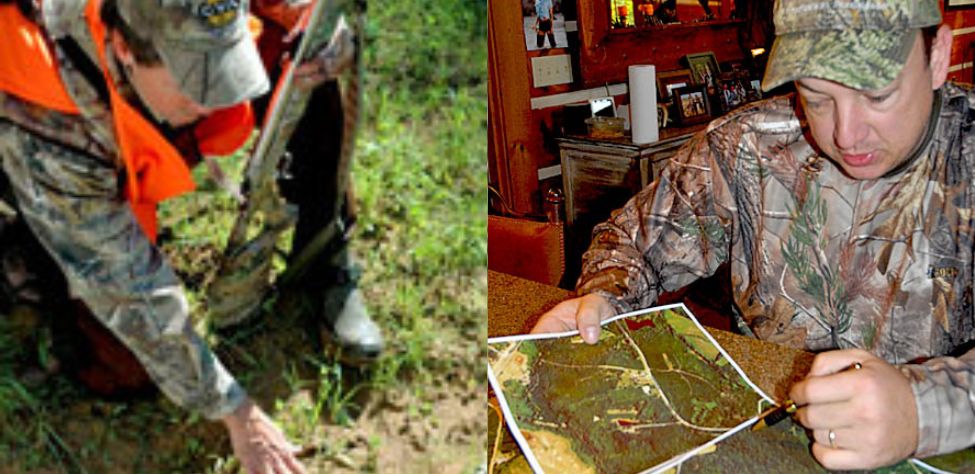
How to Deal with Hunting Pressure:
Consider these ideas to deal with hunting pressure.
- Designate two or three green fields as sanctuaries on your hunting lease. Allow no one to hunt these green fields. However, they can hunt the trails leading to the green fields as long as they stay 100 – 150 yards away.
- Plant small, 20-foot x 20-foot hunting patches where your members can hunt away from the sanctuary green fields.
- Hunt your sanctuary green fields no more than once a season during the peak of the rut.
By creating sanctuary green fields that receive no hunting pressure, does and bucks will feel comfortable feeding in these green fields during daylight hours. During the rut, the largest number of does on your property will utilize your sanctuary green fields, and older-age-class bucks most likely will come to these places in search of does when these green fields haven’t had any hunting pressure all season long.
You’ll also improve your chances of harvesting a big buck on one of these sanctuary fields if you don’t hunt the sanctuary fields for more than one or two days during the rut. Your hunting club can adapt its hunting tactics to attract and hold more big bucks on smaller acreages by creating sanctuaries – an important management and hunting tool for the hunter.

How to Hunt and Take Big Buck Deer on Small Properties
In this book, you’ll hear from 14 hunters who either have gained permission or leased properties as small as six acres to as much as 250 acres, and how they consistently take older-age-class bucks off these little lands.
VERSIONS: AUDIBLE, KINDLE & PRINT

Jim Crumley’s Secrets of Bowhunting Deer
Using a black magic marker and a gray work jumpsuit, Jim Crumley of Buchanan, Virginia, drastically changed the nature and purpose of hunting camouflage when he created the first sportsman’s camouflage – Trebark. Crumley’s love of bowhunting and his desire to be more invisible changed hunting clothing forever.
In this hunting guide, he shares the wisdom that he’s learned throughout his lifetime about how to be a hunter, how to find a deer lease, how to scout for deer, and more.
Special features include how to:
- Have a magic 60 acres to hunt
- Decide the best equipment to use
- Find deer year-round
- Locate land to hunt
- Know the best place to put your tree stand
- Get bucks within bow range
VERSIONS: AUDIBLE, KINDLE & PRINT

How to Hunt Deer Like a Pro
How do you know if the land you hunt has a trophy deer on it? Wildlife manager Bob Zaiglin, of Uvalde, Texas and Jim Crumley, the father of modern-day hunting camouflage, tells you how to find out. GPS can make finding and taking that trophy buck easier. This hunting guide will teach you how to hunt big bucks where no one else can find them, how to call deer, and how to become versatile as a deer hunter, so that if one deer tactic doesn’t work, another one will.
In the chapter, “How to find Bucks at Scrape,” Dr. Keith Causey, retired professor of Wildlife Science at Auburn University, describes the best way to hunt a scrape.
Brad Harrison of Neosho, Missouri, is a nationally-known videographer, professional deer hunter and master at calling deer. Another master is Will Primos of Primos Game Calls. These two experts will tell the best deer calls and when to use them in this book.
And for over 20 years, Bo Pitman, lodge manager of White Oak Plantation, has been studying deer movement patterns. He explains what types of conditions are best for predicting deer movement.
VERSIONS: AUDIBLE, KINDLE & PRINT

Deer hunting and deer hunters are drastically changing each year. To learn new techniques for hunting deer and have more places to hunt, I’ve interviewed some of the best deer hunters in the nation and share their tactics in How to Hunt Deer Like a Pro: Volume II.
In Chapter 10, Jacob Lamar tells you his tactics for consistently taking older-age-class bucks on public lands in several states. Chapter 11, Bob Walker explains how to find places on public lands where you can hunt that 99 percent of the other hunters never have considered hunting. The Bonus Chapter with David Ramey tells you how, where, when and with what equipment to take big Kansas bucks on public lands by hunting in 100-degree weather when others won’t hunt.
Chapter 13, Mark Drury, his family and his guests take mature bucks every season by having more small places to hunt rather than one large property. Drury explains the strategy of having satellite farms to hunt that only may be 50-150 acres each or less. Chapter 15, Pat Reeve, who hunts far-northern states and Canada, says, “I don’t like hunting for mature bucks until the weather is 20 degrees or less.” Chapter 4, Dr. Larry Marchinton says that funnels are the most-reliable stand sites to hunt for big bucks and tells why.
VERSIONS: AUDIBLE & PRINT
Tomorrow: Why Hunt Small Acreages for Deer

